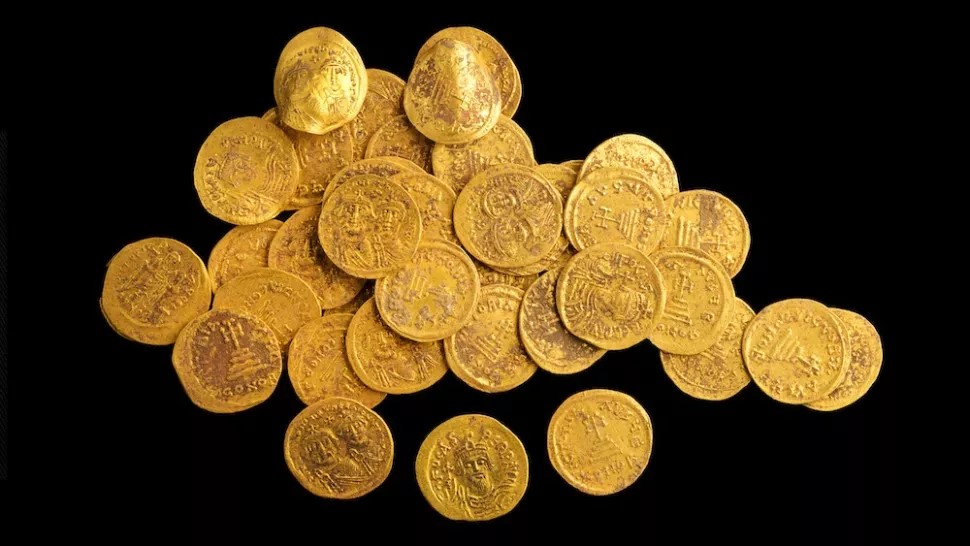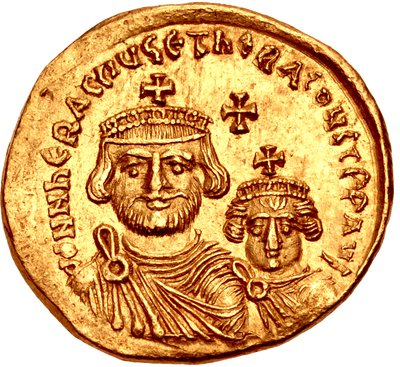
Archaeologists in Israel have discovered a treasure of 44 Byzantine gold coins and other valuables hidden in a wall at the Hermon Stream (Banias) Nature Reserve.
Weighing about 170 grams, the coins from the hoard were minted by the Byzantine Empire during the reign of Emperor Phocas (A.D. 602 to 610) and Emperor Heraclius (A.D. 610 to 641).
Coins were Gold Solidus used during Byzantine era
According to experts from the Israel Antiquities Authority (IAA), all of the coins discovered were gold solidus, which was common currency during the Byzantine era (circa A.D. 330 to 1453).
Experts dated the latest coins in the cache to the time of the Muslim conquest of Byzantine Palestine, which occurred in A.D. 635, according to a statement.
Gabriela Bijovsky, a numismatic expert with the IAA, said, “Most of the coins are of the Byzantine Emperor Heraclius, and what is particularly interesting is that in his early years as emperor, only his portrait was depicted on the coin, whereas after a short time, the images of his sons also appear.”
“One can actually follow his sons growing up—from childhood until their image appears [to be] the same size as their father, who is depicted with a long beard,” Bijovsky added.

Israel Ancient City of Banias served as Cultic site to Greek god Pan
The golden coins were discovered by researchers at Hermon Stream Nature Reserve in northern Israel, which was once the site of the ancient city of Banias (also known as Paneas or Panias).
According to an article in the journal Bulletin of the American Schools of Oriental Research, Banias once served as a cultic site to Pan, a Greek god of fertility that was half human and half goat.
Banias has a particular place in Christian tradition because it is the site where Jesus is said to have told the Apostle Peter, “on this rock, I will build my Church.”
The coin stash was found lodged into the base of a stone wall. Experts think it was left there by someone who was fleeing during the Muslim conquest.
Yoav Lerer, excavation director for the IAA, said, “The discovery reflects a specific moment in time, when we can imagine the owner concealing his fortune in the threat of war, hoping to return one day to retrieve his property, [but] in retrospect, we know that he was less fortunate.”
Lerer further noted that the discovery of the coin hoard may also shed light on the economy of the city of Banias during the last forty years of Byzantine rule.
Apart from the gold coins, archaeologists also uncovered the remains of buildings, water channels and pipes, bronze coins, and much more during the excavation in a residential quarter of the ancient city, Israeli authorities reported.
See all the latest news from Greece and the world at Greekreporter.com. Contact our newsroom to report an update or send your story, photos and videos. Follow GR on Google News and subscribe here to our daily email!



